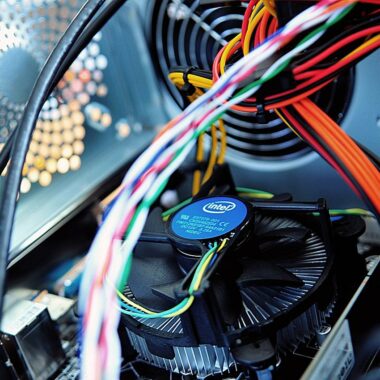The future of FPGA technology is likely to see continued growth and advancements in several areas. Some of the key trends and areas of focus include:
Artificial Intelligence and Machine Learning: FPGAs are well suited to accelerate the computationally intensive workloads of AI and machine learning algorithms, such as deep learning and neural networks. In the future, we can expect to see more use of FPGAs in AI and machine learning applications, such as computer vision and natural language processing.
High-Performance Computing: FPGAs are also well suited to high-performance computing applications, such as data center and cloud computing. With the growing demand for more powerful and energy-efficient computing, we can expect to see more use of FPGAs in these areas in the future.
Internet of Things (IoT) and Edge Computing: FPGAs are well-suited for IoT and edge computing applications, as they are low power and can be easily reprogrammed to adapt to changing requirements. In the future, we can expect to see more use of FPGAs in these areas, particularly in applications such as sensor data processing and real-time control.
5G Communications: The growing demand for high-speed and low-latency communications will drive the development of more advanced FPGA-based solutions for 5G and other communications systems.
Automotive and Aerospace: FPGA technology is also expected to play a crucial role in the future of Automotive and Aerospace industries, for example for advanced driver-assistance systems, autonomous driving, and aircraft avionics.
Overall, the future of FPGA technology looks promising, as the technology continues to evolve and improve, and as new applications for FPGAs are developed.
FPGA technology for crypto mining purposes
FPGA technology has the potential to be a powerful tool for crypto mining, as it can provide significant advantages over traditional ASIC (Application-Specific Integrated Circuit) and GPU (Graphics Processing Unit) mining. Some of the key advantages of FPGA technology for crypto mining include:
Increased Efficiency: FPGAs are highly customizable and programmable, which allows them to be optimized for specific crypto mining algorithms. This can result in significantly higher mining efficiency and profitability compared to ASIC or GPU mining.
Lower Power Consumption: FPGAs typically consume less power than ASICs, which can result in lower electricity costs and increased profitability for miners.
Flexibility: FPGAs can be reprogrammed to mine different crypto algorithms, which allows miners to adapt to changes in the crypto market and continue to mine profitable coins.
Security: FPGAs are more resistant to hardware-level attacks than ASICs and GPU, as their design can be easily updated to fix any vulnerabilities that are discovered.
Cost: FPGA mining hardware is relatively inexpensive compared to ASIC mining hardware, which can make it more accessible to a wider range of miners.
However, it’s worth noting that the FPGA mining industry is still relatively new, and the market for FPGA mining hardware is relatively small compared to the ASIC mining market. Additionally, mining difficulty for most of the coins has risen dramatically, making mining with FPGA less profitable than before.
In conclusion, FPGA technology has the potential to be a powerful tool for crypto mining, but it still has some challenges to overcome before it becomes mainstream for crypto mining purposes.











